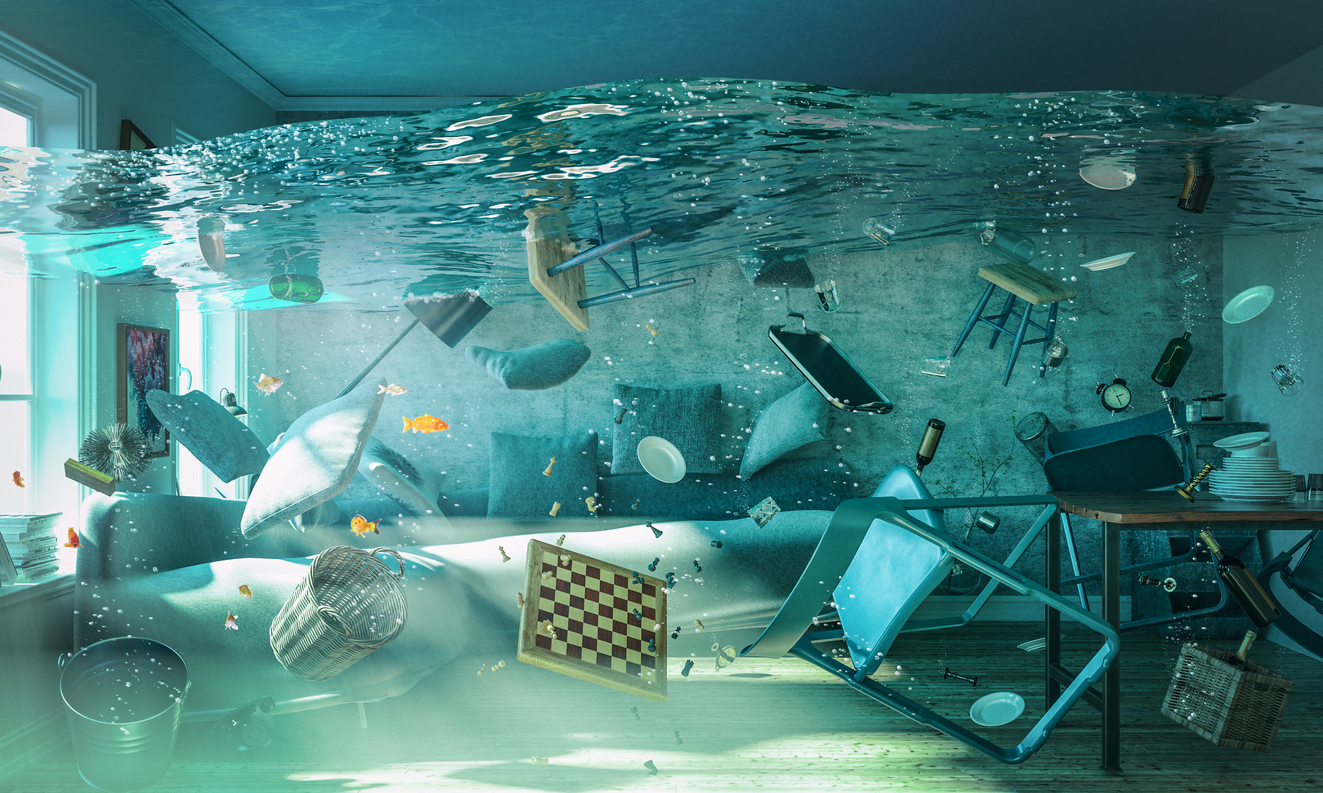The Total Coverage Blog

When it comes to asking the question “Do I need flood insurance”, there are a few very important factors to consider. Sure, living in a high risk flood zone makes the decision a bit more straight forward. But even if you don’t live in a high risk zone, consider this: Did you know that if it can rain or snow, then it can flood?
Unfortunately, many homeowners falsely believe if they are not located in a high risk flood zone, then they are free from the risk of flooding. But let’s not forget, mother nature can be unpredictable.
Floods can happen for various reasons, whether it’s heavy rainfall, storm surges, overflowing rivers, or even a burst dam. They can hit just about anywhere, not just in those notorious flood-prone areas. So, even if you live in a seemingly low-risk zone, it’s still worth paying attention.
So let’s go with the flow and help you figure out if flood insurance is right for you. The best place to start is by assessing your risk so you can best decide how to protect your home and possessions.

The risk of your home flooding can depend on a few factors. For instance, do you live near a river, lake, or any body of water that could potentially impersonate Poseidon? Are you in an area prone to heavy rainfall or tropical storms?
To get an idea of where you’re at on a flood map, we suggest using FEMA’s Flood Map Tool. It’s a great place to start assessing your flood risk. Plus, it’s quick and easy. Flood zones are classified based on the likelihood of flooding, with Zone A being the highest risk and Zone X indicating a moderate-to-low risk.
Even if you’re not in a high-risk area, remember that floods can strike anywhere, anytime. Flash floods, for example, can occur due to localized heavy rain, or storm drains can get backed up. Remember, if it can rain or snow, it can flood.
Hopefully you now have a better understanding of your risk. Now we can look at your coverage options
Flooding is one of the most common and costly disasters worldwide, it affects millions of people, and causes significant property damage. A general misconception is that standard homeowners insurance policies cover flooding. This is typically not the case and many homeowners only realize this when it’s too late.
If you reside in a high risk flood zone, you will want to have flood insurance. You may even be required to have it. This is where our agents might recommend going with a company like Aon Edge who specialize in flood insurance. With flood coverage, you will possess a financial safety net to help you rebuild and recover from water damage. Most policies will cover both your home and your possessions.
Keep in mind, many insurance carriers have a 30 day waiting period before your flood coverage kicks in. And in the event there is a named storm in Atlantic Ocean or Gulf of Mexico, there is typically a freeze (moratorium) on the ability to purchase flood insurance.
Moving on, let’s discuss what flood insurance covers.
What your flood insurance covers all depends on your policy. But to give you an idea, here is what you may be able to expect:
Some policies will even help with debris removal after waters subside.
If you’re not in a high risk zone, flood insurance may still be a worthwhile investment. It may just come in a different form. Let’s take a look.
If you don’t reside within a major flood zone, remember, flooding can still happen anywhere there is a possibility of rain or snow. In fact, over 25% of flood claims come from outside of high risk flood zones. In that case, you may want to consider something like Erie’s Sewer and Drain Backup Endorsement or Extended Water Coverage.
Sewer and Drain Backup Endorsement
Sewer or Drain Backup coverage covers loss caused by water or sewage that backs up through sewers or drains or overflows from a sump pump. This endorsement is an optional add-on for those looking to upgrade their ErieSecure Home policies.
Extended Water Coverage
Erie’s Extended Water Coverage is designed to help cover things like:
This coverage is meant to protect against sewer and drain backup or from flooding events like inland flooding, storm surge, and mudslides. It adds an extra layer of protection over the Sewer and Drain Backup Endorsement.
No matter where you reside on the flood maps, flood insurance of some sort is a good idea as a safety net. After all, floods are the most expensive and destructive natural disaster in the United States. Just a single inch of water in your home can cause up to $25,000 worth of damage.
If you still need some guidance, we have your back. You can contact us and one of our excellent agents will be able to help you assess your need and match you up with a solution that is right for you.